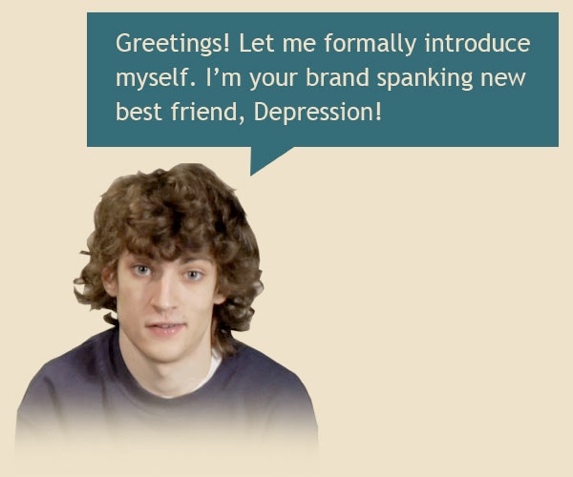Latest Public Service Radio Minute
Loss of EmploymentLoss of Employment, MP3, 1.3MB
Listen to or download all our PSAsSupport Our Work
Please donate so we can continue our work to reduce the stigma of psychiatric illness, encourage research, and support educational activities for behavioral health professionals and the public. Ways you can donate and help are on our Support and Donations page. Thank you!
More InfoLatest News Around the Web
US Antidepressant Use Increasing, Data Indicate
NBC Nightly News (8/15, story 8, 0:30, Holt) reported, “New numbers out from the CDC show about one in eight Americans over age 12 reports taking antidepressants.”
According to TIME (8/15, Sifferlin), the report from the National Center for Health Statistics indicates “that from 2011 through 2014, the most recent data available,” nearly “13% of people 12 and older said they took an antidepressant in the last month.” This “number is up from 11% in 2005-2008.”
Medscape (8/15, Brooks) reports, “For the period 2011-2014, women were about twice as likely as men to report past-month antidepressant medication use (16.5% vs 8.6%).” Meanwhile, “Overall, antidepressant use increased with age, from 3.4% among people aged 12 to 19 years to 19.1% among those aged 60 years and older.” Medscape adds, “Increased use with age occurred in both men and women.” HealthDay (8/15, Mundell) also covers the story.
Related Links:
— “13% of Americans Take Antidepressants,” Alexandra Sifferlin, Time, August 15, 2017.
Clozapine May Reduce Mortality, Protect Against Self-harm In Patients With Treatment-resistant Schizophrenia
Medscape (8/14, Yasgur) reports that research suggests “clozapine…reduces mortality and protects against self-harm in patients with treatment-resistant schizophrenia.” Researchers “found a nearly twofold higher mortality rate among patients with treatment-resistant schizophrenia who were not being treated with clozapine, compared with those treated with the” medication. The findings also “suggest a deleterious effect of other antipsychotics on self-harm compared to clozapine.” The research was published online July 28 in the American Journal of Psychiatry.
Related Links:
— Medscape (requires login and subscription)
Smoking During Pregnancy Increasing Among Women With Depression
HealthDay (8/14, Preidt) reports that research suggests “smoking during pregnancy is on the rise among American women with depression.” Investigators looked at data on approximately “8,500 mothers-to-be who took part in an annual government health survey.” The data showed “a 2.5 percent rise in smoking rates among pregnant women with depression between 2002 and 2014.” The findings were published online in the October issue of Drug and Alcohol Dependence.
Related Links:
— “Smoking on the Rise Among Pregnant Women With Depression,” Robert Preidt, HealthDay, August 14, 2017.
Little Evidence That Medical Marijuana Works For Chronic Pain, PTSD
Reuters (8/14, Rapaport) reports that while “pain and posttraumatic stress disorder (PTSD) are among the most common reasons people use medical marijuana in the U.S., there isn’t much proof cannabis works for either one of these conditions, two research reviews” published in Annals of Internal Medicine suggest. In one review, investigators “examined 27 previously published studies on this topic,” and “found too little information to determine whether the drug helps most types of pain.”
The other “analysis of five previous studies of cannabis for PTSD found too little data to determine whether this would help relieve symptoms.” Also covering the story are CNN (8/14, Scutti), MedPage Today (8/14, Boyles), Healio (8/14), and HealthDay (8/14, Dotinga).
Related Links:
— “Little evidence shows cannabis helps chronic pain or PTSD,” Lisa Rapaport, Reuters, August 14, 2017.
Opioid Overdose Treatment Costs Soaring
STAT (8/11, Ross) reported “the cost of treating opioid overdose victims in hospital intensive care units” increased by 58 percent “between 2009 and 2015,” according to a study published Friday in the Annals of the American Thoracic Society. The average cost spiked from $58,500 to $92,500 over the seven-year period, which “far outpaced the overall medical inflation rate in the U.S.,” the article says.
HealthDay (8/11, Preidt) reported the study’s authors said the findings demonstrate the US “has reached a ‘new level of crisis’ and that opioid-related demand for acute medical care has exceeded the available supply.”
MedPage Today (8/13, Boyles) and Healthcare Finance News (8/11, Sanborn) also covered the story.
Related Links:
— “The cost of treating opioid overdose victims is skyrocketing,” CASEY ROSS, STAT, August 11, 2017.
Foundation News
Nothing Found
It seems we can’t find what you’re looking for. Perhaps searching can help.

